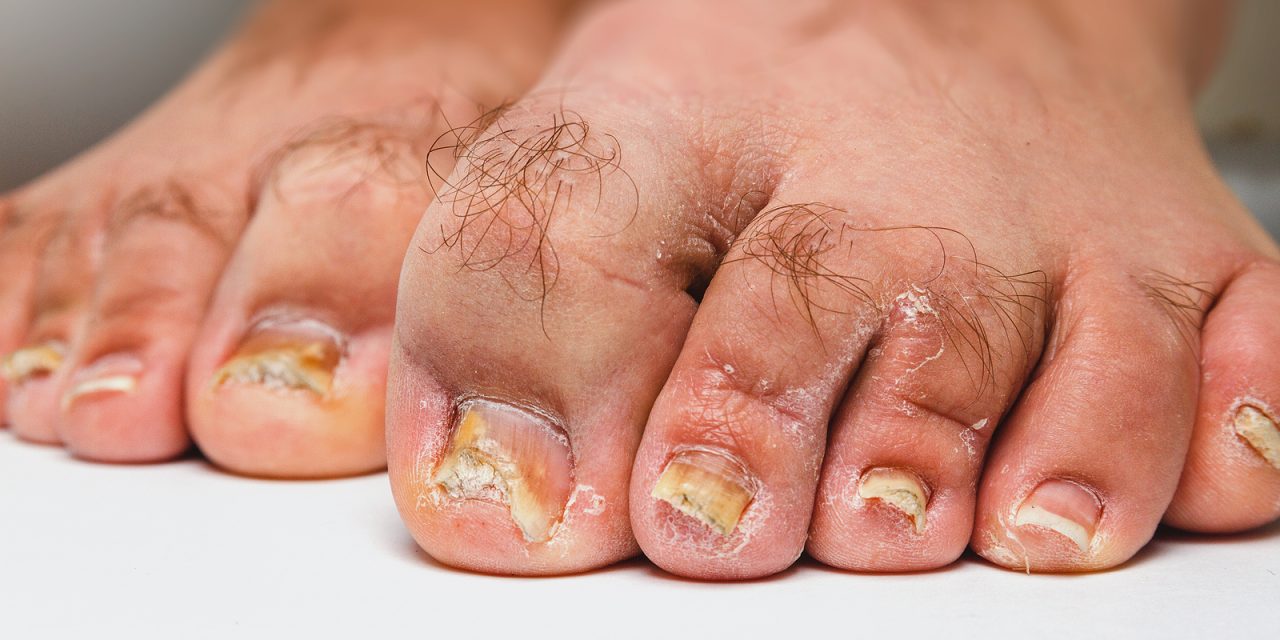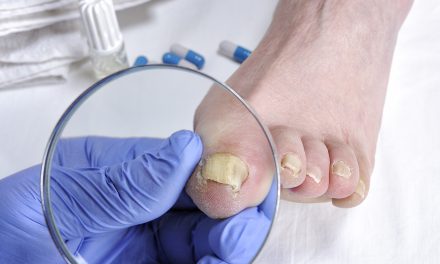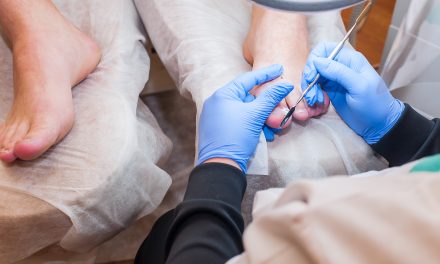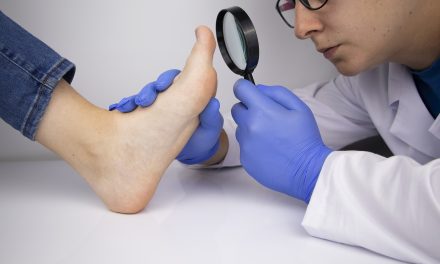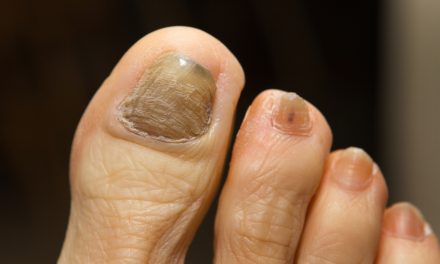Toenail fungus often begins with a small change that might go unnoticed. It can start as a tiny white or yellow spot under the tip of the nail, and if left untreated, it can spread deeper, causing changes in color, thickness, and texture.
Understanding how toe fungus starts is essential for preventing more severe infections.
These fungal infections happen when fungi, which thrive in warm, moist environments, invade tiny cracks in the nail or surrounding skin.
People who frequent public pools, gyms, or use shared showers are at higher risk due to the moist conditions. While some see it as a mere cosmetic issue, it can lead to discomfort and pain if neglected.
Fungal nail infections are persistent and can be challenging to treat. While over-the-counter treatments are available, persistent infections may require prescription medications.
Seeking treatment and maintaining good foot hygiene are key steps in managing the condition effectively.
Key Takeaways
- Toe fungus often starts as a small spot under the nail.
- Good hygiene and avoiding damp environments reduce infection risk.
- Persistent infections may need prescription treatment.
Understanding Toenail Fungal Infections
Toenail fungal infections, medically known as onychomycosis, affect the appearance and health of nails. These infections can be caused by different types of fungi and occur under certain conditions. Understanding the symptoms and types can help in recognizing and treating the issue.
What Is Onychomycosis?
Onychomycosis is a common nail condition caused by fungal infections. It affects the nails, making them thick, discolored, and sometimes painful. The infection can start as a white or yellow spot under the tip of the toenail and spread deeper into the nail. Fungal infections can lead to brittleness and irregular nail shape.
The condition is more common in adults and less frequent in children. Poor circulation and a weakened immune system may increase the risk. Recognizing the early signs is crucial for effective treatment. Nails can become unsightly and uncomfortable, making early detection important.
Common Types of Nail Fungus
Several types of fungi can cause toenail infections. Dermatophytes are the most common, thriving in warm, moist environments.
Subungual onychomycosis is the most prevalent, starting under the nail.
White superficial onychomycosis appears as white spots on the nail surface. Tinea unguium is a term often used interchangeably with onychomycosis, though it specifically refers to dermatophyte-induced infections. Candida onychomycosis is less common, often affecting fingernails and being more frequent in individuals with compromised health.
Recognizing the type of fungus involved can guide the treatment process. Tailoring treatment to specific infections may improve outcomes.
Causes of Toenail Infections
Toenail infections arise from several causes. Common factors include walking barefoot in communal areas, wearing tight-fitting shoes, and having feet frequently exposed to warm, moist environments.
These conditions create an ideal setting for fungi to thrive.
Family history may play a role in susceptibility. Certain diseases, like diabetes and circulatory problems, increase the risk of developing fungal infections. Poor foot hygiene can contribute to the likelihood of infection.
Avoiding prolonged exposure to warm and damp environments can reduce risk. Regularly cleaning feet and changing socks can prevent fungal growth, limiting the chance of infection.
Signs and Symptoms of Toenail Fungus
Toenail fungus can affect the appearance and health of nails. Recognizing early signs is key for proper treatment. Symptoms such as discoloration, nail separation, and changes in texture often indicate a fungal infection.
Identifying Toenail Fungus
Toenail fungus often starts as a small spot that can gradually spread. Patients might see a small yellow or white spot near the tip of the nail. As the infection progresses, the nail can thicken, become brittle, or even crumble. Pain can occur around the infected nail, especially when wearing shoes.
Initial symptoms may not seem serious, leading some to ignore them. However, catching fungal infections early can prevent further complications. Some people may also notice a foul odor as the fungus grows under the nail.
Nail Discoloration and Deformation
One of the most noticeable signs is nail discoloration. Infected nails may turn yellow, brown, or black. The change in color often starts at the edges and spreads inward. This symptom is a clear indicator of a fungal problem.
In addition to color changes, nails can become deformed. They might thicken or develop a rough, ragged texture. Sometimes, infected nails can start to separate from the nail bed. This separation can cause discomfort and make the affected nails more vulnerable to injury.
When to Consult a Healthcare Provider
Persistent symptoms should prompt a visit to a healthcare provider. It’s important to seek advice when nails become painful, severely discolored, or if there’s significant nail separation. Early intervention can help manage the infection effectively.
Complications might arise if left untreated, especially in individuals with diabetes or other health conditions that affect circulation. A professional assessment can identify the right treatment plan. Sometimes, what appears to be a fungal infection might be another underlying skin problem.
Symptoms of toenail fungus can sometimes mimic other conditions, so a proper diagnosis is crucial. Consulting a doctor ensures appropriate measures are taken to restore nail health and prevent further issues.
Risk Factors and Prevention
Certain conditions can increase the likelihood of developing toe fungus, while preventive measures can help keep it at bay. Understanding these factors and practices is crucial for maintaining healthy feet.
Contributing Conditions
Several conditions can predispose individuals to toe fungus. A weakened immune system makes it easier for infections to take hold. People with underlying health issues such as diabetes or psoriasis are also more prone to fungal infections.
Conditions like athlete’s foot, if untreated, can spread and affect the toenails. Additionally, people with a weak immune system should be cautious, as they are at higher risk. Understanding these contributing factors can help at-risk individuals take preventive steps.
Avoiding Fungal Growth
Preventing toe fungus involves several practical measures. Keeping feet dry and clean is essential, as fungi thrive in moist environments.
Wearing breathable socks and shoes helps minimize moisture buildup. It’s important to avoid walking barefoot in public spaces like pools and gyms, which are common breeding grounds for fungi.
Regular foot hygiene practices, such as trimming nails properly and using antifungal powders, can also help. To further reduce risk, individuals should ensure any existing conditions like athlete’s foot are effectively managed to avoid spreading a fungal infection.
Diagnostic Process
Identifying toe fungus involves recognizing symptoms, seeking professional help, and evaluating samples. Specialist input is often crucial for accurate diagnosis and tailored treatment. Tests can confirm the presence of fungi and the specific type involved.
When to See a Specialist
If someone notices changes in their toenails, such as discoloration, thickening, or brittleness, it’s time to consult a healthcare provider. A podiatrist or dermatologist can offer expert evaluation. They can distinguish between fungal infections and other possible nail conditions.
Those with diabetes or a compromised immune system should seek medical advice promptly if they suspect a fungal infection. Early diagnosis can prevent complications and speed up recovery. Some cases may not require laboratory tests, but the expertise of a specialist helps in deciding the appropriate course of action.
Examining Nail and Skin Samples
Healthcare providers often take samples from nails or the surrounding skin to verify a fungal infection. They might use a procedure called nail clippings or scrapings. These samples are then prepared for examination under a microscope.
A common step is staining samples to make fungi easier to see, as fungi might not be visible otherwise. This can help determine the presence of specific types of fungi.
Knowing the type of mold helps tailor the treatment. Moreover, specific fungal identification can help avoid unnecessary side effects from unsuitable medications. For more on the methods used in fungal diagnosis, visit the histopathologic diagnosis of fungal infections in the 21st century.
Treatment Options for Toenail Fungus
Toenail fungus, or onychomycosis, can be managed with various treatments. Medications, whether oral or topical, and advanced procedures are available for those facing this condition. Appropriate treatment depends on the fungus type and infection severity.
Oral and Topical Medications
Oral antifungal medications are commonly used to treat toenail fungus. Drugs like terbinafine and itraconazole work by targeting the infection from within. They are effective but may require blood tests to monitor liver function due to potential side effects.
Topical options such as antifungal nail creams, including ciclopirox, efinaconazole, and tavaborole, are directly applied to the nail. These treatments are less invasive and often used when the infection is mild or in combination with oral medication.
Advanced Treatments and Procedures
For those not responding to traditional treatments, advanced options such as laser treatment are available. This method uses light energy to target and kill the fungus without damaging surrounding tissue.
Nail-softening creams can be used in more severe cases to aid in removing infected nail parts, making treatments more effective. Although less common, surgical removal of the nail can be considered when other treatments fail, giving room for a healthier nail to grow.
Each treatment method offers different benefits and risks, so consulting a healthcare provider is essential to choose the most appropriate approach.
Natural Remedies and Alternative Therapies
Some people look to natural remedies for relief from symptoms of toe fungus. Essential oils and herbal treatments are popular options for those seeking alternative therapies. Each approach has its unique benefits and can be considered alongside traditional treatments.
Incorporating Essential Oils
Essential oils, particularly tea tree oil, have become popular for treating fungal infections. Tea tree oil is known for its antifungal properties and is often applied directly to the affected area.
To use, apply a few drops of diluted tea tree oil on the nail twice daily. It may help reduce infection but should be used consistently for best results.
Another option is lavender oil, which can also combat fungal growth. Like tea tree oil, it should be diluted with a carrier oil to avoid skin irritation.
These oils offer a natural alternative for those looking to avoid chemical treatments, but it’s essential to monitor for any adverse skin reactions.
Exploring Herbal Treatments
Herbal treatments often focus on ingredients such as garlic and vinegar. Garlic is recognized for its antifungal capabilities. Crushed garlic can be applied directly to the nail or mixed with other ingredients to create a paste.
Vinegar soaks, using either apple cider or white vinegar, are another method. These soaks can help alter the skin’s pH, creating an unfavorable environment for the fungus.
Other natural remedies may include the use of oregano oil, which also contains antifungal properties. It’s crucial to keep in mind that while these remedies may offer some relief, they are often most effective when used as part of a broader treatment plan that includes professional medical advice.
Living with Toenail Fungus
Living with toenail fungus can be a challenge, but with proper care and management, it is possible to keep the infection under control. Understanding daily routines and preparation for possible recurrences can greatly improve quality of life.
Daily Management and Care
Consistent care is vital for managing fungal nail infections. Keeping feet clean and dry can help prevent the spread of athlete’s foot, which is often linked to toenail fungus. After washing, it’s important to dry between the toes thoroughly.
Using an antifungal powder can help keep moisture at bay.
Wearing breathable shoes and changing socks daily can reduce the risk of spreading the fungus. Trimming nails carefully and disinfecting tools afterward prevents cuts that could worsen the infection.
Taking a biotin supplement might also support nail health, although its effect on fungal infections remains unclear.
Managing Recurrences and Complications
Despite effective management, toenail fungus can return. Being vigilant about symptoms is crucial. If signs like discoloration or thickening appear, seeking prompt treatment is advised.
Early intervention can prevent complications like the spreading of ringworm or secondary bacterial infections.
Using appropriate antifungal treatments consistently can provide relief and prevent recurrence. It’s advisable to consult a healthcare professional for persistent issues or if hair loss occurs unexpectedly. They can recommend stronger medications or suggest lifestyle changes to minimize future risks.
Future Research and Developments
Research into toenail fungus is advancing, aiming to improve treatments and prevention strategies. Efforts focus on emerging trends in therapy and preventive education, seeking to address the underlying causes and stages of toenail fungus.
Emerging Treatment Trends
One promising area in treatment development involves the combination of various approaches to manage toenail fungus.
Studies suggest that using a mix of topical and oral antifungal agents may enhance effectiveness.
Some research indicates there is no cross-resistance between antifungal drugs, offering potential for diversified treatments.
Another avenue includes exploring laser therapy as a non-invasive option.
Initial studies show some success in reducing infection without medication.
Ongoing studies are essential to confirm these findings and establish standardized protocols.
Preventive Measures and Education
Preventive strategies play a crucial role in managing toenail fungus.
Emphasis is placed on understanding the stages of toenail fungus to implement effective measures early.
Public health campaigns are being developed to educate communities on proper foot hygiene, which is vital in preventing infection.
Education about recognizing early signs of infection is important.
By teaching individuals how to spot symptoms and seek timely treatment, the spread of fungus can be controlled.
Additionally, research encourages the use of moisture-wicking socks and breathable footwear to minimize fungal growth.
These preventive practices are crucial in reducing the incidence of toenail fungus.
Frequently Asked Questions
Understanding toenail fungus involves exploring treatments, potential risks, and ways to identify progress in healing.
These questions address common concerns and offer guidance to manage and treat infections effectively.
What is the most effective treatment for toenail fungus?
The most effective treatments include antifungal medications, both topical and oral.
Prescription options often show the best results, but over-the-counter treatments may help in mild cases.
Laser therapy is another option for treating stubborn infections.
Can toenail fungus be lethal?
Toenail fungus is generally not lethal.
It can, however, lead to complications such as secondary bacterial infections, especially in individuals with compromised immune systems or diabetes, which can be serious if not treated properly.
What are the different stages of toenail fungus development?
Toenail fungus typically starts with a white or yellow spot under the nail.
As it progresses, the fungus can cause the nail to thicken, discolor, and crumble at the edges.
If left untreated, it can spread to other nails or the skin.
How can you cure fingernail fungus quickly?
Curing fingernail fungus involves using antifungal treatments, maintaining good nail hygiene, and keeping nails dry.
Prompt treatment can speed up recovery.
Fingernail fungus generally responds quicker to treatment compared to toenail fungus due to thinner nail plates.
How can you tell if toenail fungus is resolving?
Signs that toenail fungus is resolving include reduced discoloration and thickness of the nail, and the appearance of healthy nail growth starting from the base.
Regularly trimming the affected area and maintaining hygiene can also help monitor improvements.
What are the various types of toenail fungal infections?
Different types of toenail fungal infections include distal subungual onychomycosis, which is the most common. There is also white superficial onychomycosis, where white spots form on the nail surface. Each type may require slightly different approaches for effective management.

